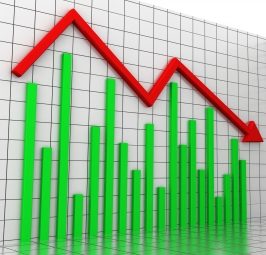U.S. Economic Growth Is Weakest Since Recession
 From the great depression of the 1930s to the great recession of 2009, U.S. economy has seen it all and to the maximum extent. When compared, the impact of the great economic depression was worse. However, if considering recovery from recession, the great recession is a possible successor in many terms. It has been five years since the recession and yet, the unemployment rate in U.S as of June 2014 is approximately 6.8 percent, which has declined by mere 3 percent since 2009. The weak growth of U.S. economy is not just visible through this figure, but a lot more is adding to it on a daily basis.
From the great depression of the 1930s to the great recession of 2009, U.S. economy has seen it all and to the maximum extent. When compared, the impact of the great economic depression was worse. However, if considering recovery from recession, the great recession is a possible successor in many terms. It has been five years since the recession and yet, the unemployment rate in U.S as of June 2014 is approximately 6.8 percent, which has declined by mere 3 percent since 2009. The weak growth of U.S. economy is not just visible through this figure, but a lot more is adding to it on a daily basis.
In contrast to the great depression, the recession has made half as much the recovery in GDP a post-depression era, which is only 9 percent since the inception of recovery phase of the economy. Comparatively, after the same time period during the great depression, it was as much as 17 percent higher. When looking at the deficit percent, the growth has been only 5% since the beginning of recovery.
There are many weaknesses of the U.S. economy. Household debts are unchanged and constant at 3.3 percent, below the figure of 2009. If industrial production is considered, statistics show only 7-8 percent of growth, while industrial capacity has grown by mere 1.7 percent. Adding to all this, the projected growth of 2 percent has not been met and continues to be at 1.7 percent, which is again low compared to the previous year’s growth. These stats only certify the fact that U.S. economy is undergoing the slowest and weakest economy growth phase.
If the IMF’s predictions are taken into account, the expected growth by 2015 is mere 3 percent, which will be the best in the period of ten years. However, this may not have much effect on the unemployment rate, which is predicted by IMF to linger as such, but putting a halt to the decline to an extent. This might be achieved because of a percent of unemployed people moving from part-time to full-time professions and approximately one-third of the unemployed people beginning to look for jobs.
A major portion of the weak growth of U.S. economy comes from the lower workforce, particularly women for specific service coverage level. Lack of radical reforms and governmental assistances are resulting in lesser part-time and even full-time workers. Furthermore, due to increase in aging population, any growth visible at the moment can simply sink back or may even fall down. Adding to the fire are no fresh reforms concerning wages or tax credits that are working as fuel. Additionally, IMF suggests that some new projects in the construction/infrastructure industry may add the much-needed boost for the growth of the economy as such.
While a lot of action and new ideas are required from the US government to get the economy going at a steady pace, it is yet to come out of the books and live in real. With such slow growth and no silver lining visible at the moment, predictions may be easier to be made than achieved for the U.S. economy.



